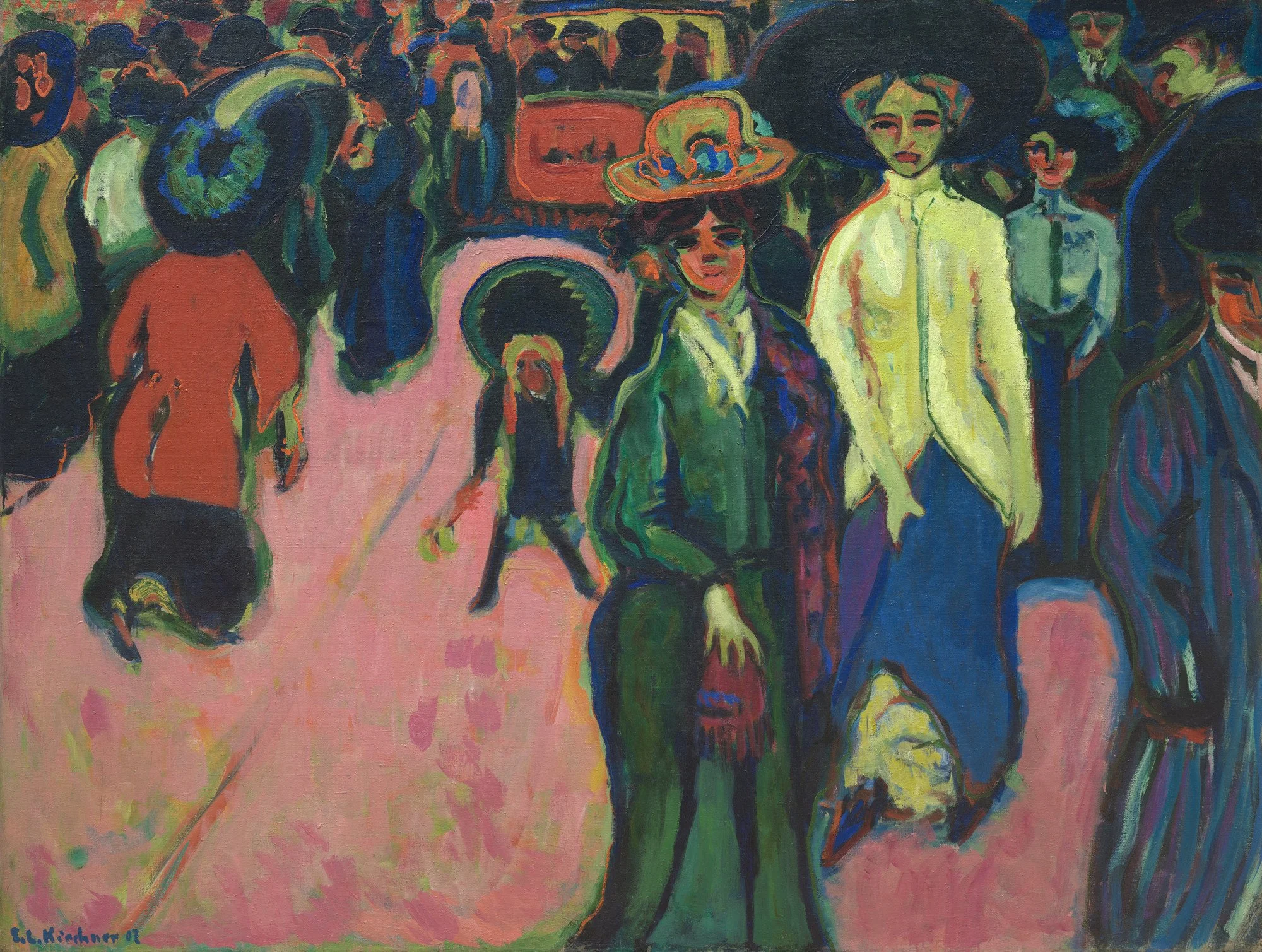An Overview of Ernst Ludwig Kirchner’s ‘Street, Dresden’
The early twentieth century was a time of rapid urbanization and social change. New art movements were emerging alongside the changes happening in Europe. One of the groups of artists that were pushing boundaries in Germany was known as Die Brücke. Die Brücke (or, The Bridge) art intended to bridge the gap between traditional, academic art, and more authentic, expressive art. This group focused on conveying anxieties and the emotional intensities of the modern world through bold color, distortion, and distinct line work.
Street, Dresden was painted in 1908 during a time of change throughout Germany. The title of this work comes from the city of Dresden where Kirchner felt uncomfortable with the modern world, specifically with the isolation he felt in big cities.
The painting shows a crowded scene featuring pedestrians and a streetcar. Kirchner creates a sense of chaos and unease through his depiction of alienation and the loss of individuality. Contributing to this theme of alienation are the bold color choices of greens and oranges that he uses for the skin color of his subjects. The color palette throughout this work is acidic and unnatural, heightening the emotional tension of the painting. Inspired by Fauvist works, Kirchner’s use of color to express emotions went against the standard of art at the time.
The figures of this painting are distorted and elongated, enhancing that sense of discomfort and dehumanization. Many of the figures are facing away from the viewers, but it is clear that for those viewers do see, their faces lack individuality and defining features.
Measuring at nearly five feet high by six feet and seven inches wide, Kirchner further added to that overwhelming sense of anxiety in a busy city. Being so large of a painting, viewers can get easily immersed and feel the anxiety that Kirchner himself did.
This work uses distortion, unnatural color, and emotional intensity as a statement about the alienation of modern urban life. It captures the spirit of German Expressionism through style and subject matter, and brings viewers into that unease Kirchner himself felt.
References:
Kirchner, Ernst Ludwig. Street, Dresden. 1908. Oil on canvas. The Museum of Modern Art, New York.

